Vanguard has revolutionized retirement savings by making investing more affordable for everyone. Their pioneering work with index funds has driven down costs across the entire investment industry.
Now, you’ll find a wide range of Vanguard funds in most retirement plans, including your 401(k). Their reputation for low fees and strong performance makes them a top choice for building a solid financial future.
Today, I’m going to introduce you to a number of Vanguard retirement-focused mutual funds you’re likely to find in your 401(k) plan. To be clear: Your plan might not hold one, some, or all of these—if they don’t, you can always ask your plan sponsor to include them. You can also consider holding them in other tax-advantaged accounts, such as an IRA or HSA.
Disclaimer: This article does not constitute individualized investment advice. These securities appear for your consideration and not as personalized investment recommendations. Act at your own discretion.
Editor’s Note: Tabular data appearing in this article are up-to-date as of Oct. 31, 2024.
Table of Contents
What Should You Want in a Retirement Fund?

When investing your retirement savings, you need to consider a few critical factors.
To start, a robust retirement portfolio should provide diversification across various asset classes. This typically means stocks and bonds, though it can also mean alternative asset classes such as real estate or commodities. Diversifying your retirement portfolio across these asset classes can help defray your risk and smooth your returns.
Costs matter too. Every dollar spent on fees and expenses is a dollar no longer available to grow and compound over time, so keeping expenses cut to the bone is vital. Good news there: The best Vanguard retirement funds will generally have some of the lowest fees and expenses in the business.
And don’t forget taxes. A taxable account, such as a standard brokerage account, is better suited to take advantage of certain tax-advantaged investments, such as municipal bonds. For tax-advantaged accounts, such as 401(k)s, some of the best investments include bond funds (where the income interest won’t be taxed) and actively managed stock funds (where the capital gains distributions from heavy trading won’t be taxed).
Finally, you ideally want your retirement portfolio to produce regular dividend income. Stocks can regularly experience nasty corrections and bear markets, but a good income fund can provide for your living expenses without forcing you to sell at an inopportune time.
Why Vanguard Mutual Funds?
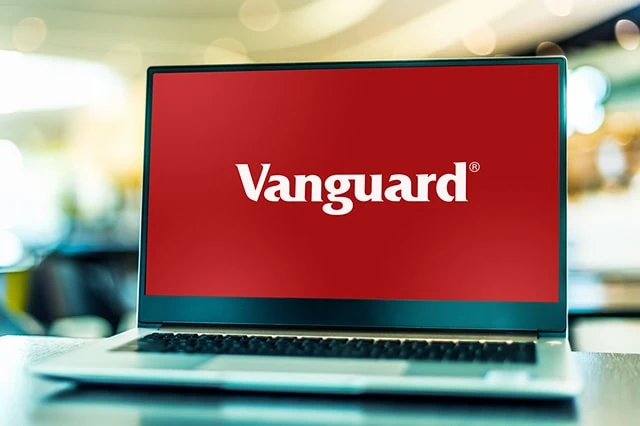
Vanguard Group is a leader in investment funds. Today, this former upstart mutual fund company has more than $8.0 trillion in assets under management with an average expense ratio of just 0.08%, or a mere 80¢ for every $1,000 invested. There are currently more than 420 Vanguard funds, including mutual funds and Vanguard ETFs.
Vanguard grew into the powerhouse mutual fund company it is today by taking care of its clients and genuinely looking after their interests. Vanguard funds really started and continue to accelerate the trend of fee compression. But it’s not only the best Vanguard retirement funds that benefit. We all collectively pay less in fees and expenses and enjoy better returns because of the index revolution started and led by Vanguard’s founder Jack Bogle.
Related: 12 Best Long-Term Stocks to Buy and Hold Forever
The Best Vanguard Retirement Funds for a 401(k) in 2024
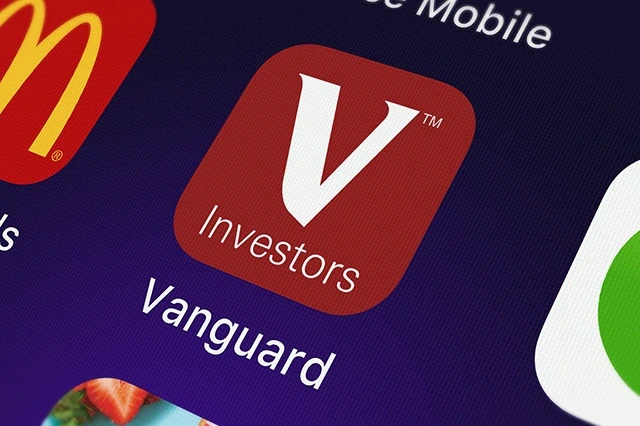
With all that out of the way, let’s dig into some of the best Vanguard retirement funds to hold in a 401(k) to consider diving into this year.
Related: Best Fidelity Retirement Funds for a 401(k) Plan
1. Vanguard Explorer Fund Investor Shares
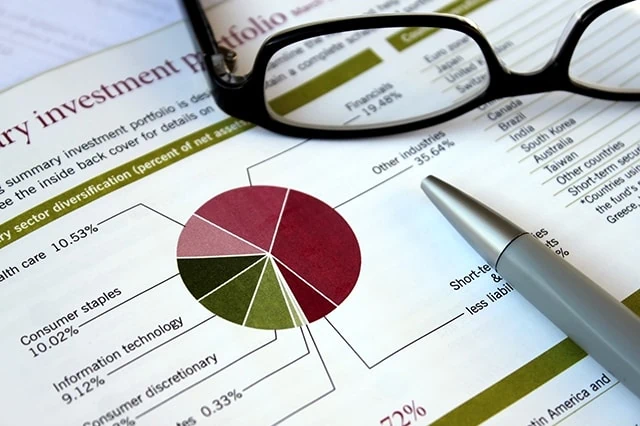
— Style: U.S. small growth
— Assets under management: $3.2 billion
— Expense ratio: 0.45%, or $4.50 per year for every $1,000 invested
— Dividend yield: 0.5%
Vanguard Explorer Fund Investor Shares (VEXPX) is an actively managed mutual fund that invests in predominantly American small- and midsized stocks with growth potential.
VEXPX’s portfolio currently spans around 700 stocks with an average market cap of $6.3 billion—right around the midpoint of the mid-cap range ($2 billion to $10 billion), though the majority of its holdings fall into the small- ($500 million to $2 billion) and micro-cap ($500 million or less) ranges. Holdings right now include the likes of Texas tank barge operator Kirby Corp. (KEX) and mid-cap investment bank Houlihan Lokey (HLI).
While larger companies also have the potential for outsized growth, smaller companies, as a group, tend to be more explosive—for better or worse. They benefit from investing’s rule of large numbers (effectively, doubling your revenues from $1 million to $2 million is a lot easier than doing so from $1 billion to $2 billion). And when institutional investors become interested in these stocks, large influxes of new investment money can send their stocks skyward.
But they’re riskier. Smaller firms have fewer and narrow revenue streams, meaning if a core product line struggles, it can more easily lead to stock turbulence and losses. They also have less access to capital than larger companies, so if times get tight, it’s harder for them to survive.
Related: 5 Best Vanguard Retirement Funds [Start Saving in 2024]
Funds like VEXPX help defray that risk by allowing you to buy many smaller companies at once, so one stock’s failure doesn’t torpedo your portfolio’s worth. That risk is further reduced by Explorer’s management style—holdings are selected by five different investment advisors that manage independent subportfolios, allowing them to use their specialities to generate outsized returns while preventing any one manager’s strategy from upending the entire fund’s performance.
You want to hold actively managed funds like VEXPX in tax-advantaged plans like a 401(k) because of how they’re run—that is, human managers tend to add and subtract holdings much more often than an index fund does. To wit, VEXPX has a “turnover ratio” of 40%, which means in a given year, it trades two out of every five holdings. A popular Vanguard S&P 500 index fund, by comparison, has a turnover ratio of just 2%.
This matters because trading in mutual funds can generate capital gains, which are returned to investors as distributions every year. These distributions are taxable, but you can snuff out this liability by not holding these funds in a taxable account.
Related: 7 Best Fidelity ETFs for 2024 [Invest Tactically]
2. Vanguard Total Bond Market Index Fund Admiral Shares

— Style: U.S. intermediate core bond
— Assets under management: $102.4 billion
— Expense ratio: 0.05%, or 50¢ per year for every $1,000 invested
— SEC yield: 4.3%*
No retirement asset allocation is complete without bond funds. As an asset class, bond funds play an important role in lowering volatility and providing regular income. However, because bond interest is taxable at less favorable (read: ordinary) rates—and because interest is the predominant source of returns on bonds—these funds are best held in tax-advantaged accounts like 401(k)s.
Related: 9 Monthly Dividend Stocks for Frequent, Regular Income
Within the world of Vanguard bond funds, the Vanguard Total Bond Market Index Fund Admiral Shares (VBTLX) stands out as one of the very best Vanguard retirement funds for its combination of competitive yield and rock-bottom fees and expenses. VBTLX is large, with $100+ billion in the Admiral share class and more than $330 billion in quality bond assets spread across all of its share classes. And with an expense ratio of just 0.05%, it’s all but free to own.
The Vanguard Total Bond Market Index Fund provides broad exposure to the universe of bonds. Approximately 46% of its portfolio is Treasury or agency debt backed by the U.S. government, and another 20% is invested in government mortgage-backed securities (MBSes). Industrial-sector corporate bonds make up a little over 15%, banks and financial institutions make up 9%, and the rest is spread across foreign bonds, utilities, and commercial mortgage backed securities (CMBSes).
Related: 5 Best Vanguard Dividend Funds [Low-Cost Income]
One of the most critical metrics to consider when considering bond funds is duration, which is a measure of interest-rate sensitivity. As an example, a bond with a duration of two years would see its price rise by 2% if interest rates fell by 1% (or conversely, would see its price fall by 2% if interest rates rose by 1%). The actual calculation of duration is fairly complex; it’s the weighted average of the bond’s cash flows. But the key takeaway is that, all else equal, the longer a bond’s time to maturity, the higher its duration—and thus the higher the interest-rate risk.
The Vanguard Total Bond Market Index Fund, with a duration of 6.3 years, has a medium-term duration with only moderate interest-rate risk. So, apart from the 4%-plus yield, investors could enjoy respectable capital gains if market interest rates decline in the coming years in response to falling inflation.
* SEC yield reflects the interest earned across the most recent 30-day period. This is a standard measure for funds holding bonds and preferred stocks.
3. Vanguard Federal Money Market Fund
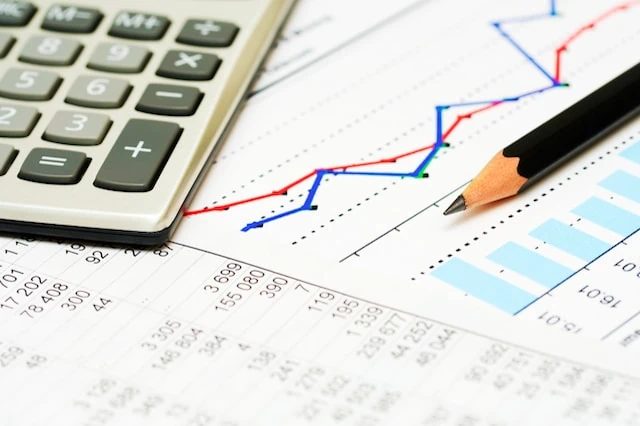
— Style: Money market
— Assets under management: $315.2 billion
— Expense ratio: 0.11%, or $1.10 per year for every $1,000 invested
— SEC yield: 4.8%
When interest rates go higher, higher-duration bond funds can experience capital losses. That was certainly the case in 2022, when very long-term bonds actually saw greater losses than common stock indexes like the S&P 500.
Related: 10 Best Vanguard Funds for the Everyday Investor
If you are looking for a competitive yield with essentially no duration or interest rate risk at all, the Vanguard Federal Money Market Fund (VMFXX) is a solid option and one of the very best Vanguard retirement funds at today’s prices. This income fund consists entirely of U.S. Treasury bills and other U.S. government obligations and repurchase agreements. This is an extremely conservative option with extremely limited possibility of loss.
Money market funds are very sensitive to Federal Reserve policy moves. It was barely two years ago that money market funds in general offered virtually nothing in yield. But after the most aggressive string of rate hikes in history, VMFXX is a legitimate income fund with a yield of ~5%. And because money market funds are effectively bond funds, the same suggestion applies: Their income is taxed at ordinary rates, and income is the point, so they’re better held in tax-advantaged plans.
As the Fed lowers rates in 2024 and onward, VMFXX will see its own yield fall as its existing portfolio matures and is replaced with newer lower-yielding investments. When rates come down materially, you might want to re-evaluate your options. But until then, the Vanguard Federal Money Market Fund remains one of the very best Vanguard retirement funds for its low risk and competitive yield.
Related: Best Schwab Retirement Funds for an IRA
4. Vanguard 500 Index Fund Admiral Shares

— Style: U.S. large-cap stock
— Assets under management: $552.8 billion
— Expense ratio: 0.04%, or 40¢ per year for every $1,000 invested
— Dividend yield: 1.2%
If we’re talking about tax consequences alone, a taxable account is much better positioned to take advantage of an index fund’s tax efficiency than a tax-advantaged account.
However, given that a 401(k) is often an investor’s primary (and sometimes only) investing account, and given that performance is the ultimate goal, an S&P 500 index fund absolutely belongs in any 401(k).
The vast majority of fund managers who run large-cap funds (funds that invest in larger companies) struggle to consistently beat the S&P 500 Index, particularly after fees. In the first half of 2023, 60% of active managers underperformed the S&P 500, according S&P Dow Jones Indices. That’s no anomaly: A majority of active managers have failed to beat the S&P 500 in 20 out of the past 23 years.
So if you can’t beat it, join it.
Related: The 5 Best Vanguard Dividend Funds to Buy [Low-Cost Income]
The Vanguard 500 Index Fund Admiral Shares (VFIAX) boasts more than $550 billion in assets under management, and that’s just in the VFIAX share class. Across VFIAX and its ETF share class, this fund manages more than $1.2 trillion! That scale is why VFIAX can offer a skinflint expense ratio of just 0.04%—that’s not free, but it’s awfully close.
The S&P 500 is a collection of the largest and most dominant American companies. To be selected for this stock market index, a company must have a market capitalization of at least $18.0 billion, its shares must be highly liquid (shares are frequently bought and sold), at least 50% of its outstanding shares must be available for public trading, it must have positive earnings in the most recent quarter, and the sum of its previous four quarters must be positive. Once a company is in the index, it doesn’t necessarily get kicked out if it fails to meet all of the criteria at some point in the future, but the selection committee would take that under consideration.
Turnover (how much the fund tends to buy and sell holdings) tends to be low, as only a handful of stocks enter or leave the index in any given year. This makes VFIAX an extremely tax-efficient option for taxable investors. This might be Vanguard’s oldest index strategy, but it remains one of the very best Vanguard retirement funds.
Related: 7 Best Fidelity ETFs for 2024 [Invest Tactically]
5. Vanguard Target Retirement Funds

— Style: Target-date
— Expense ratio: 0.08%, or 80¢ per year for every $1,000 invested
One of the challenges in retirement planning is getting the asset allocation right, or having an asset class mix that is appropriate for an investor at your age and stage of life. An ideal portfolio for a 20-year-old is likely going to be very different from that of a 40-year-old, and both those portfolios will be different from what’s ideal for a 60-year-old.
This is where Vanguard target retirement funds can really add value.
Target-date funds—also called life-cycle funds—are a type of mutual fund that are designed to change their asset allocation over time. Target-date funds start out invested heavily in stocks, then slowly reduce their stock exposure and replace it with bond exposure as they approach their target retirement date, following a glide path.
Related: Best Target Date Funds: Vanguard vs. Fidelity vs. Schwab
The target retirement dates are intended to be estimates; they don’t have to be super precise. Generally, most mutual fund families will create target-date funds in five-year increments (say, 2025, 2030, 2035, etc.).
And given the hyper-specific focus on retirement, target-date funds tend to be a mainstay of 401(k) plans.
Vanguard is one of the largest players in this space, and the Vanguard Target Retirement Funds tend to be very competitive on price. The funds themselves typically hold both U.S. and international stocks of various sizes, as well as U.S. and international bonds.
For a longer primer on Vanguard Target Retirement Funds, take a look at our Beginner’s Guide to Vanguard Target-Date Funds.
Related: 11 Best Stock Screeners & Stock Scanners
Learn More About These and Other Funds With Morningstar Investor

If you’re buying a fund you plan on holding for years (if not forever), you want to know you’re making the right selection. And Morningstar Investor can help you do that.
Morningstar Investor provides a wealth of information and comparable data points about mutual funds and ETFs—fees, risk, portfolio composition, performance, distributions, and more. Morningstar experts also provide detailed explanations and analysis of many of the funds the site covers.
With Morningstar Investor, you’ll enjoy a wealth of features, including Morningstar Portfolio X-Ray®, stock and fund watchlists, news and commentary, screeners, and more. And you can try it before you buy it. Right now, Morningstar Investor is offering a free seven-day trial. You can check out the current deal, as well as discounted rates for students and teachers, by visiting the Morningstar Investor website.
What is the Minimum Investment Amount on Vanguard Mutual Funds?

Vanguard funds are known for being shareholder-friendly. It blazed new trails with the index fund, and Vanguard has done more than any other investment firm to keep costs to a minimum for investors.
There is one hitch. Many of Vanguard’s cheapest funds in terms of fees have initial investment minimums of around $3,000—and some can be even more.
But if you’re investing through a 401(k), don’t sweat it.
Funds don’t have minimum investment requirements when you buy them through a 401(k) plan. When you invest in a 401(k), you decide what percentage of your total contribution you want to allocate to each fund, and every time contributions are taken from your paycheck, the appropriate amount is parceled out.
However, if you’re considering investing in a Vanguard fund outside of a 401(k), note that many Vanguard index funds are also available as ETFs. Most brokers will allow you to buy as little as one share, and some even allow for fractional shares. And if you use a commission-free brokerage, you can buy those ETFs without incurring additional fees. ETF prices vary, of course, but many cost less than $100, and they rarely exceed $400 per share.
What Are Index Funds?
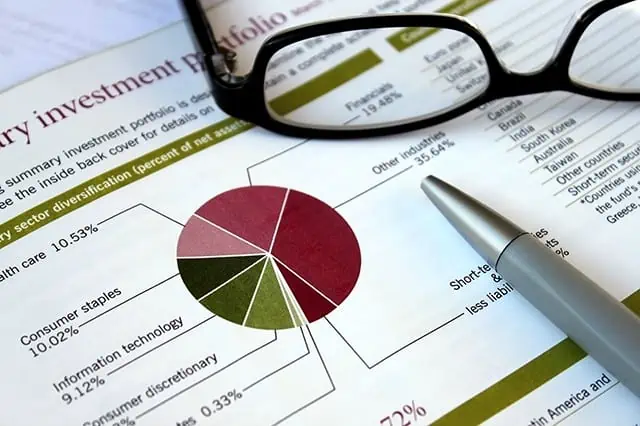
There are two kinds of funds: actively managed funds and index funds.
With an actively managed fund, one or more managers are in charge of selecting all of the fund’s holdings. They’ll likely have a specific strategy to adhere to, and they’ll be tasked with beating a benchmark index, but they’ll be given a lot of discretion about how to achieve that. These managers will identify opportunities, conduct research, and ultimately buy and sell a fund’s stocks, bonds, commodities, and so on.
An index fund, on the other hand, is effectively run by algorithm. The fund will attempt to track an index, which is just a group of assets that are selected by a series of rules. The S&P 500 and Dow Jones Industrial Average? Those are indexes with their own selection rules. Index funds that track these indexes will generally hold the same stocks, in the same proportions, giving you equal exposure and performance (minus fees) to those indexes.
If you guessed that it’s more expensive to pay a conference room full of fund managers than it is a computer that tracks an index, you’d be right. That’s why actively managed funds tend to cost much more in fees than index funds.
And that’s why ETFs are generally cheaper. Most (but not all) mutual funds are actively managed, while most (but not all) ETFs are index funds.
What Types of Funds Are Available in 401(k) Plans?

Virtually every 401(k) plan is limited to mutual funds. While a handful of plans might offer exchange-traded funds (ETFs), they’re typically limited to mutual funds—and a handful, at that. Rather than a self-directed account, where you have your pick of virtually the entire mutual fund universe, 401(k)s only let you invest in, say, 10, 15, or 20 mutual funds, each of which cover a specific investing style.
Would it be nice to invest in ETFs, which typically offer lower costs? Sure. But mutual funds have certain qualities more befitting a 401(k).
For one, mutual funds don’t trade all day on an exchange, which discourages long-term investors from panic-selling during a particularly bad day in the market. They also allow for fractional share ownership, which is important given that 401(k) plan investors are typically allocating a fixed amount of money to their account every paycheck.
What Is a Mutual Fund?

A mutual fund is an investment company that pools money from many investors to buy stocks, bonds or other securities. The investors get the benefits of professional management and certain economies of scale. A pool of potentially millions or even billions of dollars is large enough to diversify and might have access to investments that would be impractical for an individual investor to own.
Here’s an example: An investor wanting to mimic the S&P 500 Index (an index made up of 500 large, U.S.-listed companies) would generally have a hard time buying and managing a portfolio of 500 individual stocks, especially in the exact proportions of the S&P 500 Index. Another example: An investor wanting a diversified bond portfolio might have a hard time building one when individual bond issues can have minimum purchase sizes of thousands (or tens of thousands!) of dollars.
Equity funds or bond funds will generally be a far more practical solution.
To invest in a mutual fund, you’ll need to open an account with the fund sponsor or open a brokerage account with a broker that has a selling agreement in place with the fund sponsor. As a general rule, most large, popular mutual funds will be available at most brokers, so if you open a traditional investment account (like an IRA or brokerage), you’ll have access to most of the mutual funds you’d ever want to invest in.
Why Does a Fund’s Expense Ratio Matter So Much?

Every dollar you pay in expenses is a dollar that comes directly out of your returns. So, it is absolutely in your best interests to keep your expense ratios to an absolute minimum.
The expense ratio is the percentage of your investment lost each year to management fees, trading expenses and other fund expenses. Because index funds are passively managed and don’t have large staffs of portfolio managers and analysts to pay, they tend to have some of the lowest expense ratios of all mutual funds.
This matters because every dollar not lost to expenses is a dollar that is available to grow and compound. And over an investing lifetime, even a half a percent can have a huge impact. If you invest just $1,000 in a fund generating 5% per year after fees, over a 30-year horizon, it will grow to $4,116. However, if you invested $1,000 in the same fund, but it had an additional 50 basis points in fees (so it only generated 4.5% per year in returns), it would grow to only $3,584 over the same period.
Like Young and the Invested’s content? Be sure to follow us.
Related: 12 Best Long-Term Stocks to Buy and Hold Forever

As even novice investors probably know, funds—whether they’re mutual funds or exchange-traded funds (ETFs)—are the simplest and easiest ways to invest in the stock market. But the best long-term stocks also offer many investors a way to stay “invested” intellectually—by following companies they believe in. They also provide investors with the potential for outperformance.
So if your’e looking for a starting point for your own portfolio, look no further. Check out our list of the best long-term stocks for buy-and-hold investors.
Related: The Best Fidelity ETFs for 2024 [Invest Tactically]
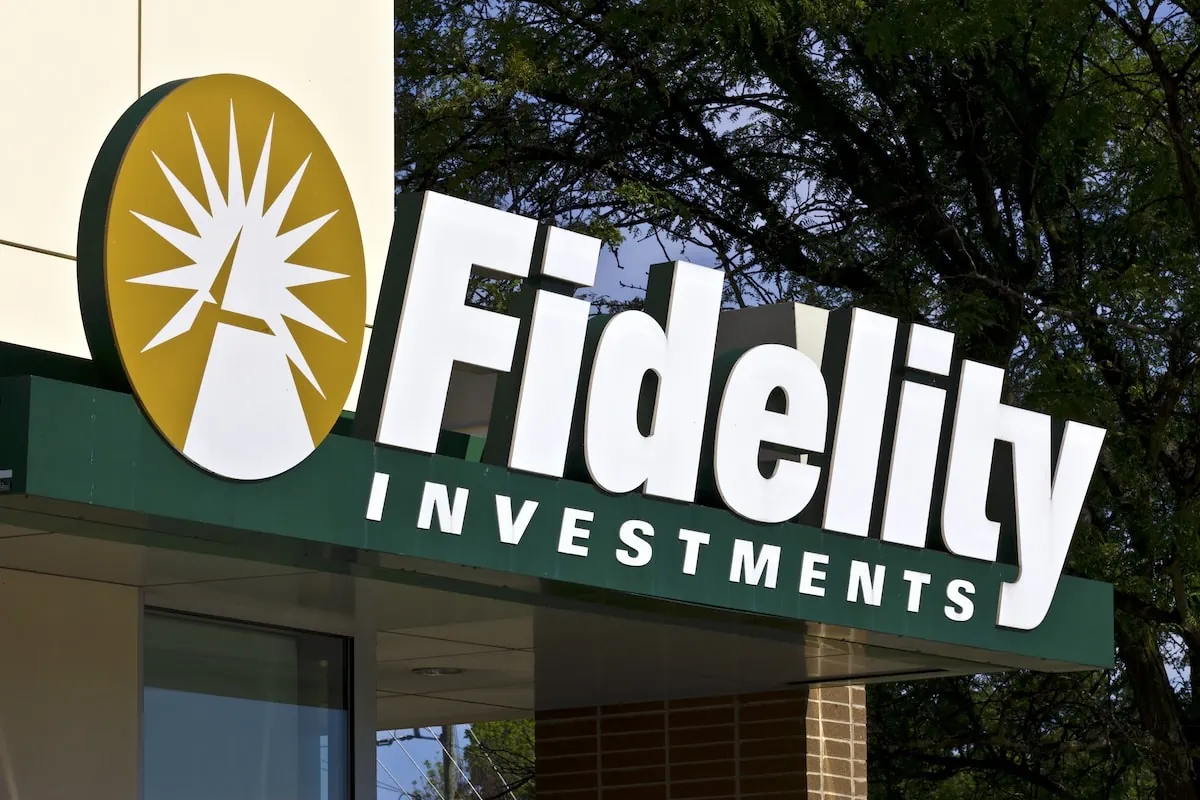
If you’re looking to build a diversified, low-cost portfolio of funds, Fidelity’s got a great lineup of ETFs that you need to see.
In addition to the greatest hits offered by most fund providers (e.g., S&P 500 index fund, total market index funds, and the like), they also offer specific funds that cover very niche investment ideas you might want to explore.
Related: 9 Best Monthly Dividend Stocks for Frequent, Regular Income

The vast majority of American dividend stocks pay regular, reliable payouts—and they do so at a more frequent clip (quarterly) than dividend stocks in most other countries (typically every six months or year).
Still, if you’ve ever thought to yourself, “it’d sure be nice to collect these dividends more often,” you don’t have to look far. While they’re not terribly common, American exchanges boast dozens of monthly dividend stocks.
Please Don’t Forget to Like, Follow and Comment

Did you find this article helpful? We’d love to hear your thoughts! Leave a comment with the box on the left-hand side of the screen and share your thoughts.
Also, do you want to stay up-to-date on our latest content?
1. Follow us by clicking the [+ Follow] button above,
2. Subscribe to The Weekend Tea, our weekly newsletter to read more about investing, spending, taxes, and more, and
3. Give the article a Thumbs Up on the top-left side of the screen.
4. And lastly, if you think this information would benefit your friends and family, don’t hesitate to share it with them!





